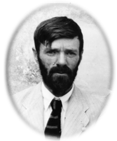Definition
Theme refers to the general topic or subject, or the main idea in a literary work such as, a story, an essay, or a narrative. Some common examples of themes include: love, friendship, war, crime, punishment, death, revenge, nature, isolation, etc.Characteristics
The basic characteristics of a theme could be outlined as under:- It acts as a framework for the entire literary piece.
- It is a distinct, recurring, and unifying quality or idea.
- It is usually universal in nature.
- Generally conveys a moral or message about society, life or human nature.
- Stated either direct or indirect manner.
- Theme is abstract in nature.
- A theme does not necessarily need to be true in the real world.
- Theme binds together everything: the characters, the plot and the setting.
Components
A theme has two components namely, the thematic concept and the thematic statement. The thematic concept simply refers to the subject or topic of the work, while the thematic statement refers to what the author remarks or opines about that subject. The thematic concept thus is usually an abstract element, like “transgression” or “atonement”, while the thematic statement is generally the concretization of that abstract idea through images, setting, and most commonly through the characters’ actions, words, and thoughts. Whereas the former is expressed in word or phrase level, the latter is expressed in a sentence and is often a general statement about society, life or human nature.Types of Themes
Themes are of two types: major themes and minor themes. A Major theme is an idea which is repeated or given prominence throughout the story. Hence it acts as the central driving force in a literary work. A minor theme, on the other hand, is an idea that occurs for a short period. It is of less significance and usually appears for part of the story only to be replaced by another minor theme.For instance, Saul Bellow’s Seize the Day (1956) consists of the following major and minor themes:
Major Themes
- Alienation.
- Meaningless of Life.
- Affirmation of Human Life.
Minor Themes
- Deceit.
- Conflict between Father and Son.
- Conflict between Husband and Wife.
Determining a Theme
A literary work may comprise more than one theme. The writer himself may infuse his work with multiple themes. Again, the same work may produce other themes due to reader’s individualistic way of interpretation. It is indeed, very hard to stipulate any specific yardstick for identifying a theme. This statement is very logical when we compare it with the point of individualistic interpretation as stated earlier. However, we can still try to identify themes by the following ways:- Studying character’s dialogues.
- Studying character’s thoughts and feelings.
- Studying character's actions, beliefs, etc.
- Studying specific events and contexts.
- Studying character’s change in mood and attitude.
- Studying the author's background.
- Identifying the main topics or subjects.
- Analyzing the title of the work.
- Determining the imagery, motifs, figure of speech, etc.
- Identifying the presence of any universal topics, such as human struggle and so the like.
References
Gupta, A.N. and Satis Gupta. A Dictionary of English Literature. 2nd ed. Bareilly: PBD, 1995Griffith, Benjamin W. A Pocket Guide to Literature and Language Terms. Newyork: Barron's, 1976
“Theme”. Literary Terms. 2016. Literary Terms. 15 July 2016 < http://literaryterms.net/theme/>.
" Theme (narrative)”. Wikipedia. 2016. Wikimedia Foundation Inc. 15 July 2016
< https://en.wikipedia.org/wiki/Theme_(narrative)>.










